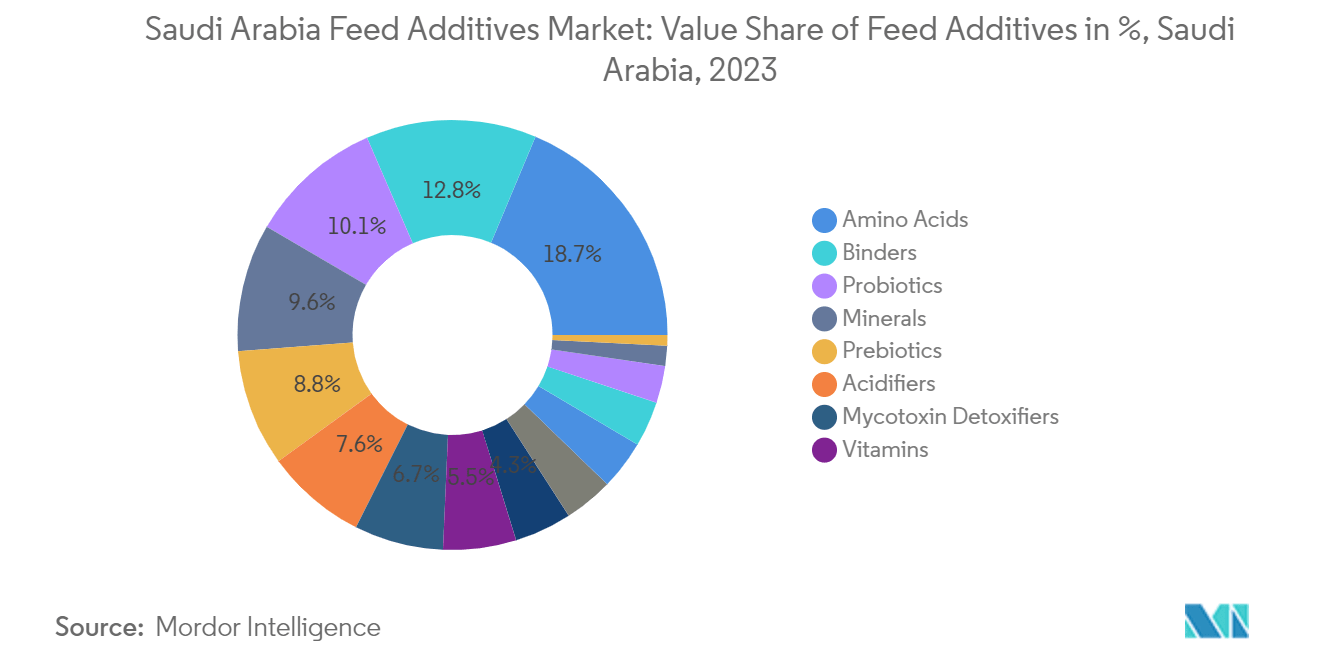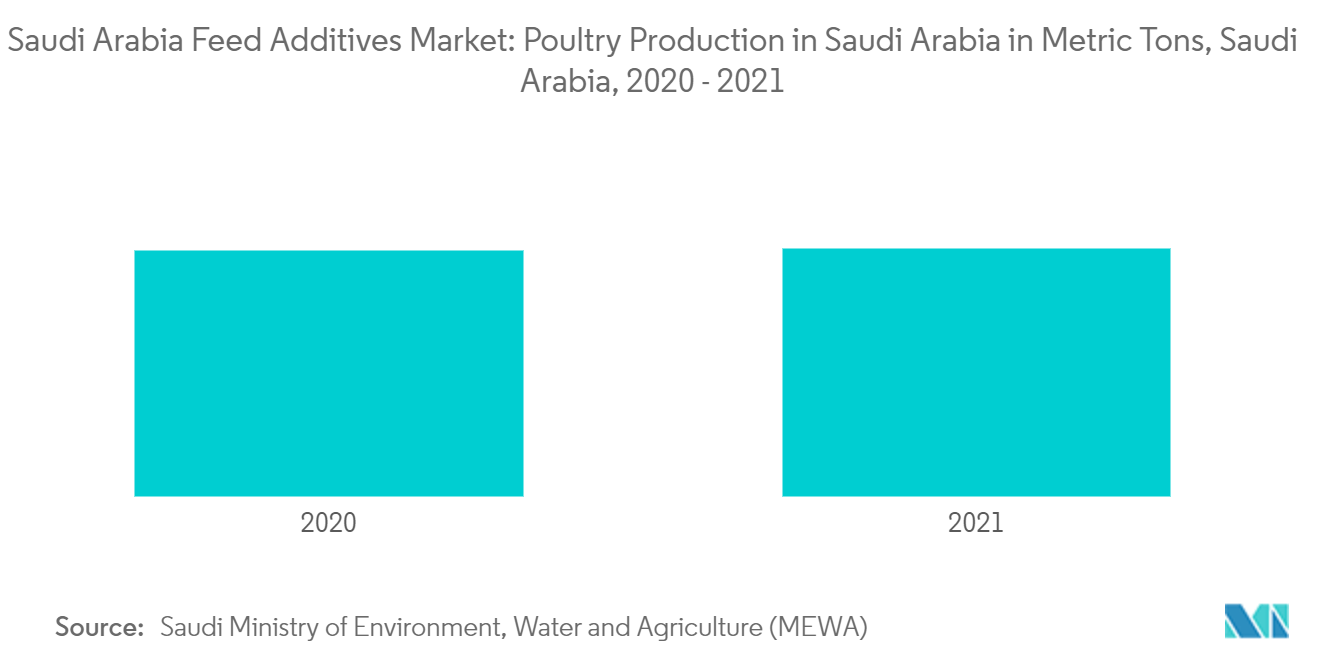Market Trends of Saudi Arabia Feed Additives Industry
The Amino Acids Segment Leads the Feed Additives Market in Saudi Arabia
In terms of feed additives, amino acids hold the largest market share in the country, accounting for 18.6% of the feed additive market in 2022. Amino acids are associated with protein synthesis, which increases the meat content and quality of milk in animals. Binders, probiotics, and minerals are the next most used feed additives, accounting for 12.9%, 10.1%, and 9.6%, respectively, of the Saudi Arabian feed additives market. Minerals and probiotics promote animal growth, while binders help in increasing the feed conversion ratio. Amino acids in animal feed play an indispensable role in improving the efficiency of animal protein production and contribute to the increased protein supply.
As there is a high demand for cows and dairy products, the performance of cows has become a major concern. The latest technology in amino acids is helping to maintain a balanced dairy diet, with the right amount of limiting amino acids (which cannot be synthesized by dairy cows and should be fed externally), lower crude protein, and reduced amino acid market price.

Rising Production of Poultry in Saudi Arabia Driving the Feed Additives Market
Saudi Arabia is the largest poultry meat producer in the GCC countries, with a production of around 1,970 metric tons, which is approximately 54.89% of the total GCC poultry meat production.
Poultry meat is the most popular meat among GCC consumers at all levels of age and income. One of the reasons is that poultry meat is cheaper than beef and lamb. Saudi consumers prefer white-appearing poultry meat as the meat is believed to be of high quality, which offers an authentic taste when cooked and is thus, good for health. Saudi Arabia's Almarai company has invested USD 1.12 billion to establish a factory and new farms to increase poultry production. In 2022, the Saudi Arabian Ministry of Environment, Water, and Agriculture issued 275 poultry project licenses, including 119 for broiler projects, 26 for egg production with a capacity of more than two billion eggs per year, and 12 for breeding and producing broiler mothers and operating hatcheries with a capacity of 480.5 million chicks per year.


